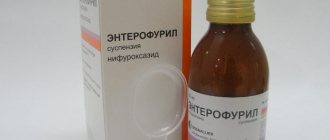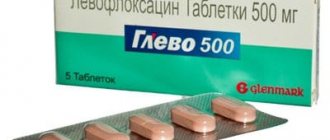- November 7, 2018
- Other drugs
- Fedorova Victoria
For inflammatory processes of an infectious nature, the pediatrician sometimes prescribes antibiotics. Parents are wary of potent medications. If bronchitis, sore throat, pharyngitis and other diseases occur, Suprax suspension for children is prescribed. It has both positive and negative properties. This will be discussed later in the article.
Composition of the drug
"Suprax" is an antibacterial drug belonging to the group of cephalosporins. The product is available both in the form of tablets and in the form of granules for preparing a suspension. 1 tablet contains 400 mg, 5 ml of suspension - 100 mg.
An important advantage of the drug is the ability to treat young children without necessarily placing them in a hospital. This is due to the powerful effects of antibiotics. Suprax for children includes:
- strawberry flavoring;
- dye;
- cellulose;
- silica;
- hyprolose;
- povidone.
The main active ingredient in Suprax is cefixime. It inhibits the walls of pathogenic microorganisms, and thus stops their spread.
Release form
- Suprax is a semi-synthetic, third-generation cephalosporin antibiotic. It is classified as a broad-spectrum medicine. It is produced in three varieties:
- Pills. These are oblong tablets of pale orange color with a line in the middle, with the smell of strawberries. There are usually 1, 5, 7 or 10 pieces in a package.
- Capsules. They are a capsule with a white base and a purple cap. Inside contains a mixture of white powder and yellowish granules. The 400 mg capsules are marked with the code H808. Usually there are 6 pieces in a blister, and 1 blister in a cardboard box.
- Granules for preparing a suspension. These are small balls of white or cream color, sold in dark-colored bottles of 60 ml. The pack contains 1 bottle, a dosage spoon and a syringe for measuring the exact dosage. After diluting the granules, a suspension is obtained with a concentration of the active substance of 100 mg per 5 ml. This is the volume contained in the measuring spoon that comes with the kit. And the concentration of 20 mg of the active substance is obtained per 1 ml.
Action
The drug produces a bactericidal effect. Taking the drug leads to the death of bacteria that are highly sensitive to the main component of the drug.
Cefixime is an antibiotic of the cephalosporin group. It inhibits the action of bacteria. Unlike penicillins, cephalosporins are resistant to beta-lactamases. They are produced by certain types of bacteria.
Thanks to this property, the antibiotic is effective in the treatment of pathological processes caused by gram-positive and gram-negative bacteria. The first group includes streptococci and staphylococci, and the second group includes E. coli, Proteus, and meningococcus.
After the Suprax suspension is ingested, it is quickly absorbed from the intestines into the blood. Then it is evenly distributed throughout the organs and tissues, accumulating in the area of inflammation. It is excreted from the patient's body through the kidneys almost unchanged.
A broad-spectrum antibiotic drug with the correct dosage does not cause adverse reactions, so it is approved for the treatment of young children.
Buy Suprax granules for suspension 30g 100mg/5ml 60ml in pharmacies
International nonproprietary name:
cefixime
Chemical name:
-(6R, 7R)-7-[(Z)-2-(2-amino-4-thiazolyl)-2-(carboxy-methoxyimino)acetamido]-8-oxo-3-vinyl-5-thia-1- azabicyclo[4,2,0]-oct-2-ene-2-carboxylic acid trihydrate.
Dosage form:
granules for the preparation of suspension for oral administration.
Composition per 1 bottle for the preparation of oral suspension 100 mg/5 ml:
Active ingredient: cefixime trihydrate (micronized) 1.402 g (equivalent to 1.2 g cefixime + 4% refill).
Inactive ingredients: sodium benzoate 0.03 g, sucrose 30.225 g, xanthan gum 0.155 g, strawberry flavor 0.048 g.
Description
Almost white to cream-colored small granules. Once mixed, it forms an off-white to cream-colored slurry with a sweet strawberry aroma.
Pharmacotherapeutic group:
Antibiotic cephalosporin.
Pharmacological properties
Cefixime is a semi-synthetic cephalosporin antibiotic of the third generation with a broad spectrum of action. Cefixime acts bactericidal, inhibiting the synthesis of the cell membrane, and is resistant to the action of beta-lactamases produced by most gram-positive and gram-negative bacteria.
Cefixime is active against the following microorganisms:
gram-positive: Streptococcus spp. (Streptococcus pneumoniae, Streptococcus pyogenes); gram-negative: Neisseria gonorrhoeae, Moraxella (Branhamella) catarrhalis, Escherichia coli, Klebsiella spp., Serratia spp., Proteus spp., Morganella morganii, Providencia spp. and Haemophilus influenzae.
Note: Pseudomonas species, Enterococcus (Streptococcus) serogroup D, Listeria monocytogenes, Staphylococcus spp., including methicillin-resistant strains, Enterobacter spp., Bacteroides fragilis, Clostridium spp. resistant to cefixime.
Pharmacokinetics
Absorption:
According to the results of studies involving healthy volunteers, after oral administration of cefixime, maximum serum concentrations are usually achieved after 3-4 hours. Following single doses of 50, 100, and 200 mg, mean maximum serum concentrations were 1.02, 1.46, and 2.63 mg/L, respectively, in 12 healthy Caucasians, and 0.69, 1.13, and 1.95 mg/l, respectively, in 12 healthy Japanese subjects.
Children's population:
After single doses of 1.5, 3.0, and 6.0 mg/kg cefixime were administered to Japanese pediatric patients, peak serum concentrations after 3 to 4 hours were 1.14, 2.01, and 3.97 mg/L, respectively.
Distribution:
In human plasma, cefixime is approximately 70% protein bound, with the level of binding independent of concentration in the range of 0.5-30 mg/l. Cefixime is distributed, reaching concentrations in organs/tissues and biological fluids, such as saliva, tonsils, mucous membrane of the maxillary sinuses, middle ear discharge, bile, lung tissue and gall bladder.
Metabolism and excretion:
Biologically active metabolites of cefixime were not detected in the plasma or urine of healthy volunteers after oral administration of the drug. Approximately 20% of a 200 mg dose of cefixime in healthy volunteers is excreted unchanged by the kidneys. The half-life is 2-4 hours.
Kidney failure:
The pharmacokinetics of a single 400 mg oral dose were studied in studies involving patients with varying degrees of renal impairment. Based on the results of studies, half-life, total clearance (CL/F), renal clearance and area under the pharmacokinetic curve (AUC) in patients with severe renal impairment (creatinine clearance < 20 ml/min), patients on hemodialysis or on continuous ambulatory peritoneal dialysis (CAPD) differed from the corresponding indicators of healthy volunteers.
Pharmacokinetic characteristics (mean values) of cefixime in healthy volunteers and patients with varying degrees of severity of renal dysfunction
| Study group | CLCr (ml/min/1.73 m2) | Cmax (mg/l) | Tmax (h) | T1/2β (h) | AUC (mg×h/l) | CL/F (ml/kg/h) | Renal clearance (ml/kg/h) |
| Healthy Volunteers | 111 | 4,9 | 4,9 | 3,2 | 40 | 141 | 22 |
| Severity of renal dysfunction | |||||||
| Very light | 71 | 5,8 | 4,0 | 4,7 | 57 | 127 | 22 |
| Light | 51 | 7,6 | 4,5 | 7,0 | 90 | 70 | 10 |
| Moderate | 28 | 7,5 | 3,5 | 7,2 | 100 | 80 | 3,7 |
| Heavy | 9,8 | 9,6 | 6,0 | 11,5 # | 188 # | 41 # | 2,1 # |
| Hemodialysis | 1,3 | 6,2 | 4,8 | 8,2 | 94 | 73 | 0,4 # |
| CAPD | 3,0 | 10,2 | 5,0 | 14,9 # | 220 # | 42 # | 0,5 # |
The discrepancy is statistically significant compared to the values of healthy volunteers.
Abbreviations: CLCr - creatinine clearance, Cmax - maximum concentration, Tmax - time to reach maximum concentration, T1/2β - half-life, CL/F - total clearance, CAPD - continuous ambulatory peritoneal dialysis, AUC - area under the pharmacokinetic curve # p < 0 .05 compared to healthy volunteers
Indications for use
Infectious and inflammatory diseases caused by microorganisms sensitive to the drug:
- upper respiratory tract infections, for example, pharyngitis, tonsillitis; otitis media, sinusitis; - lower respiratory tract infections, for example, acute bronchitis, exacerbation of chronic bronchitis; - urinary tract infections, for example, cystitis, cystourethritis, uncomplicated pyelonephritis, urethritis, acute uncomplicated gonorrhea.
Contraindications
- Hypersensitivity to cefixime, cephalosporins or any component of the drug. - History of severe immediate hypersensitivity reactions (for example, anaphylactic reaction) to other beta-lactam antibiotics and penicillins (see section Special instructions). — Hereditary fructose intolerance, glucose-galactose malabsorption, or sucrase-isomaltase deficiency. — Children's age up to 6 months.
With caution: old age, chronic renal failure, pseudomembranous colitis (history).
Carefully:
History of mild immediate hypersensitivity reactions to penicillins and other beta-lactam antibiotics.
Use during pregnancy and breastfeeding
The use of the drug during pregnancy is possible when the expected benefit to the mother outweighs the potential risk to the fetus.
If it is necessary to prescribe the drug during lactation, breastfeeding should be stopped.
Directions for use and doses
Children aged 6 months to 12 years are prescribed as a suspension at a dose of 8 mg/kg/day once or in 2 doses of 4 mg/kg every 12 hours. You must always strictly adhere to the dosage prescribed by your doctor. If you have any doubts about the correct use, you should consult your doctor.
If the package is equipped with a dosage syringe, you must be guided by the following dose selection table:
Dose selection of oral suspension, 100 mg/5 ml, using a dosage syringe
| Body weight, kg | Daily dose, mg | Dose of suspension, ml (taken once a day) | Dose of suspension, ml (taken 2 times a day) |
| 6 | 48 | 2,4 | 1,2 |
| 7 | 56 | 2,8 | 1,4 |
| 8 | 64 | 3,2 | 1,6 |
| 9 | 72 | 3,6 | 1,8 |
| 10 | 80 | 4 | 2 |
| 11 | 88 | 4,4 | 2,2 |
| 12 | 96 | 4,8 | 2,4 |
| 13 | 104 | 5,2 | 2,6 |
| 4.8 ml + 0.4 ml | |||
| 14 | 112 | 5,6 | 2,8 |
| 1 full syringe + 0.6 ml | |||
| 15 | 120 | 6 | 3 |
| 1 full syringe + 1 ml | |||
| 16 | 128 | 6,4 | 3,2 |
| 1 full syringe + 1.4 ml | |||
| 17 | 136 | 6,8 | 3,4 |
| 1 full syringe + 1.8 ml | |||
| 18 | 144 | 7,2 | 3,6 |
| 1 full syringe + 2.2 ml | |||
| 19 | 152 | 7,6 | 3,8 |
| 1 full syringe + 2.6 ml | |||
| 20 | 160 | 8 | 4 |
| 1 full syringe + 3 ml | |||
| 21 | 168 | 8,4 | 4,2 |
| 1 full syringe + 3.4 ml | |||
| 22 | 176 | 8,8 | 4,4 |
| 1 full syringe + 3.8 ml | |||
| 23 | 184 | 9,2 | 4,6 |
| 1 full syringe + 4.2 ml | |||
| 24 | 192 | 9,6 | 4,8 |
| 1 full syringe + 4.6 ml | |||
| 25 | 200 | 10 | 5 |
| 2 full syringes | |||
| 26 | 208 | 10,4 | 5,2 |
| 2 full syringes + 0.4 ml | 4.8 + 0.4 ml | ||
| 27 | 216 | 10,8 | 5,4 |
| 2 full syringes + 0.8 ml | 1 full syringe + 0.4 ml | ||
| 28 | 224 | 11,2 | 5,6 |
| 2 full syringes + 1.2 ml | 1 full syringe + 0.6 ml | ||
| 29 | 232 | 11,6 | 5,8 |
| 2 full syringes + 1.6 ml | 1 full syringe + 0.8 ml | ||
| 30 | 240 | 12 | 6 |
| 2 full syringes + 2 ml | 1 full syringe + 1 ml | ||
| 31 | 248 | 12,4 | 6,2 |
| 2 full syringes + 2.4 ml | 1 full syringe + 1.2 ml | ||
| 32 | 256 | 12,8 | 6,4 |
| 2 full syringes + 2.8 ml | 1 full syringe + 1.4 ml | ||
| 33 | 264 | 13,2 | 6,6 |
| 2 full syringes + 3.2 ml | 1 full syringe + 1.6 ml | ||
| 34 | 272 | 13,6 | 6,8 |
| 2 full syringes + 3.6 ml | 1 full syringe + 1.8 ml | ||
| 35 | 280 | 14 | 7 |
| 2 full syringes + 4 ml | 1 full syringe + 2 ml | ||
| 36 | 288 | 14,4 | 7,2 |
| 2 full syringes + 4.4 ml | 1 full syringe + 2.2 ml | ||
| 37 | 296 | 14,8 | 7,4 |
| 2 full syringes + 4.8 ml | 1 full syringe + 2.4 ml | ||
| 38 | 304 | 15,2 | 7,6 |
| 2 full syringes + 4.8 + 0.4 ml | 1 full syringe + 2.6 ml | ||
| 39 | 312 | 15,6 | 7,8 |
| 3 full syringes + 0.6 ml | 1 full syringe + 2.8 ml | ||
| 40 | 320 | 16 | 8 |
| 3 full syringes + 1 ml | 1 full syringe + 3 ml | ||
| 41 | 328 | 16,4 | 8,2 |
| 3 full syringes + 1.4 ml | 1 full syringe + 3.2 ml | ||
| 42 | 336 | 16,8 | 8,4 |
| 3 full syringes + 1.8 ml | 1 full syringe + 3.4 ml | ||
| 43 | 344 | 17,2 | 8,6 |
| 3 full syringes + 2.2 ml | 1 full syringe + 3.6 ml | ||
| 44 | 352 | 17,6 | 8,8 |
| 3 full syringes + 2.6 ml | 1 full syringe + 3.8 ml | ||
| 45 | 360 | 18 | 9 |
| 3 full syringes + 3 ml | 1 full syringe + 4 ml | ||
| 46 | 368 | 18,4 | 9,2 |
| 3 full syringes + 3.4 ml | 1 full syringe + 4.2 ml | ||
| 47 | 376 | 18,8 | 9,4 |
| 3 full syringes + 3.8 ml | 1 full syringe + 4.4 ml | ||
| 48 | 384 | 19,2 | 9,6 |
| 3 full syringes + 4.2 ml | 1 full syringe + 4.6 ml | ||
| 49 | 392 | 19,6 | 9,8 |
| 3 full syringes + 4.6 ml | 1 full syringe + 4.8 ml | ||
| 50 | 400 | 20 | 10 |
| 4 full syringes | 2 full syringes |
If the package is equipped with a dosage spoon, you must be guided by the following dose selection table:
Selection of the dose of oral suspension 100 mg/5 ml using a dosage spoon
| Body weight, kg | Dose of suspension, ml (taken once a day) | Dose of suspension, ml (taken 2 times a day) |
| Up to 6 kg | 2.5 ml | 1.25 ml |
| 6 – 12.5 kg | 5 ml | 2.5 ml |
| 12.5 – 25 kg | 10 ml | 5 ml |
| 25 – 37.5 kg | 15 ml | 7.5 ml |
| more than 37.5 kg | 20 ml | 10 ml |
For adults and children over 12 years of age weighing more than 50 kg - 400 mg 1 time per day or 200 mg 2 times per day.
The average duration of treatment is 7-10 days
For diseases caused by Streptococcus pyrogenes, the course of treatment is at least 10 days.
In case of impaired renal function, the dose is set depending on the creatinine clearance (CC): with creatinine clearance 21-60 ml/min or in patients on hemodialysis, the daily dose should be reduced by 25%. With a CC of 20 ml/min in patients on peritoneal dialysis, the daily dose should be halved.
Be careful! The dosing syringe or dosing spoon is used exclusively for the oral administration of Suprax suspension and should not be used for dosing other medicinal products. Do not use other devices for dosing and administering the drug Suprax (syringe, spoon, pipette from another drug), in addition to the special syringe or spoon supplied in the kit.
Method for preparing the suspension:
turn the bottle over and shake the contents of the bottle. Add 40 ml (total volume) of cooled boiled water in 2 stages or bring the volume of the suspension to the mark (arrow mark on the bottle label, if this mark is present). Shake the suspension until a homogeneous suspension is formed, let it stand for 5 minutes to ensure complete dissolution of the powder. If there is an arrow mark on the bottle, make sure (after the foam has settled) that the volume reaches the mark. If this does not happen, bring the volume to the mark again.
Before use, the prepared suspension must be shaken well.
Use the suspension within 14 days from the date of preparation, subject to storage conditions (from 15 to 25C). Do not freeze!
Side effect
Blood and lymphatic system disorders:
eosinophilia, granulocytopenia, hemolytic anemia, thrombocytopenia, pancytopenia, leukopenia, neutropenia, agranulocytosis, aplastic anemia, bleeding.
Gastrointestinal tract disorders: abdominal pain, diarrhea, dyspepsia, nausea, vomiting, dry mouth, anorexia, constipation, flatulence, dysbacteriosis, stomatitis, glossitis.
Disorders of the liver and biliary tract: jaundice, impaired liver function, cholestasis, hepatitis.
Infectious and parasitic diseases: pseudomembranous colitis, candidiasis.
Immune system disorders: anaphylactic reaction, serum sickness, anaphylactic shock.
Changes in laboratory parameters: increased aspartate aminotransferase level, increased alanine aminotransferase level, increased blood alkaline phosphatase level, increased blood bilirubin level, increased blood urea level, increased blood creatinine level, increased prothrombin time.
Nervous system disorders: dizziness, headache, tinnitus, convulsions, hypersensitivity.
Skin and subcutaneous tissue disorders: drug rash with eosinophilia and systemic symptoms (DRESS syndrome), itching, rash, exudative erythema multiforme (including Stevens-Johnson syndrome), toxic epidermal necrolysis (Lyell's syndrome), urticaria, angioedema, erythema multiforme.
From the urinary system: interstitial nephritis, impaired renal function, acute renal failure.
From the reproductive system: vaginitis, itching of the genitals.
Other: fever, facial swelling, shortness of breath, development of hypovitaminosis B.
Overdose
Symptoms: increased adverse reactions, especially from the gastrointestinal tract, with the exception of allergic reactions.
Treatment: gastric lavage, symptomatic and supportive therapy.
There is no specific antidote. Cefixime is not excreted in large quantities from the body by hemo- or peritoneal dialysis.
Interaction with other drugs
Blockers of tubular secretion, allopurinol, diuretics delay the excretion of cefixime by the kidneys, which can lead to an increase in the concentration of the drug in the blood plasma.
When used simultaneously with carbamazepine, its concentration in the blood plasma increases.
Cefixime reduces the prothrombin index and enhances the effect of indirect anticoagulants. Cefixime should be administered with caution to patients taking coumarin anticoagulants such as warfarin. Since cefixime may enhance the effects of anticoagulants, the combined use of these drugs may lead to an increase in prothrombin time with the possible development of bleeding.
Antacids containing magnesium or aluminum hydroxide slow down the absorption of the drug, so cefixime should be taken 1-2 hours before or 4 hours after taking the above medications.
Taking cefixime may cause a false positive result in a urine glucose test using Benedict's solution, Fehling's solution, or the Clinitest test. In this case, it is recommended to use tests based on enzymatic glucose oxidase reactions (for example, Tes-Tape strips).
It is possible to obtain a false-positive direct Coombs test result in patients taking cefixime.
When cefixime is used concomitantly with potentially nephrotoxic drugs (for example, aminoglycosides, polymyxin B, colistin and viomycin) and diuretics (ethacrynic acid, furosemide), the risk of renal dysfunction increases.
The effectiveness of oral contraceptives may be reduced when taken together with cefixime.
special instructions
Patients with a history of allergic reactions to penicillins and other β-lactam antibiotics may have increased sensitivity to cephalosporin antibiotics. If toxic epidermal necrolysis (Lyell's syndrome), Stevens-Johnson syndrome, drug rash with eosinophilia and systemic symptoms (DRESS syndrome) occurs, cefixime should be discontinued and the necessary therapy should be carried out.
Cases of drug-induced hemolytic anemia, including serious and fatal cases, have been reported for cephalosporins (as a class). Cases of reoccurrence of hemolytic anemia after resumption of cephalosporin therapy have been reported in patients with a history of cephalosporin (including cefixime)-induced hemolytic anemia.
Like other cephalosporins, cefixime can cause acute renal failure, including tubulointerstitial nephritis. In case of acute renal failure, stop taking cefixime and institute appropriate treatment/take necessary measures.
Monitoring of renal function is necessary when cefixime is co-administered with the following drugs: aminoglycosides, polymyxin B, colistin, high-dose loop diuretics.
When using cefixime, the risk of developing a decrease in prothrombin activity increases.
When using cefixime, the risk of developing antibiotic resistance increases.
Long-term use of the drug may disrupt the normal intestinal microflora, which can lead to the growth of Clostridium difficile, causing severe diarrhea and pseudomembranous colitis. In this case, the use of drugs that inhibit intestinal motility is contraindicated.
When prescribing the drug, it is necessary to take into account that one bottle of suspension contains 30.225 g of sucrose, which is about 3 XE.
Use in children:
The safety of taking the drug cefixime in premature infants and newborns has not been established.
Influence on the ability to drive vehicles and machinery.
Patients taking cefixime should be careful when driving vehicles and engaging in other potentially hazardous activities that require increased concentration and speed of psychomotor reactions, taking into account the side effect profile.
Release form
Granules for the preparation of suspension for oral administration, 100 mg/5 ml.
From 30.3 to 35.0 g (equivalent to 1.2 g of cefixime + 4% refill) granules for the preparation of an oral suspension of 100 mg/5 ml in dark glass bottles with a screw-on plastic cap.
Storage conditions
At temperatures from 15 oC to 25 oC. Keep out of the reach of children!
Best before date
3 years. Do not use after the expiration date indicated on the package.
Vacation conditions
On prescription.
Indications for use
According to the instructions for use, Suprax for children is prescribed for the treatment of diseases caused by a certain type of bacteria. They are sensitive to the action of the main substance, which is part of the suspension. The drug can be prescribed to patients in case of diseases that are caused not only by infection, but also by exacerbation of chronic diseases.
An antibiotic is the strongest drug that is prescribed when weaker ones do not provide the necessary help. It has a wide spectrum of action.
Treatment should not be started with this remedy. Otherwise, weaker antibiotics will be useless.
Indications for use:
- sinusitis, pharyngitis, bronchitis, otitis;
- pyelonephritis, cystitis;
- purulent wounds.
The active substance quickly copes with the causative agent of the disease. The positive effect occurs on the 2-3rd day. This reduces the duration of drug treatment. When taking Suprax suspension for children, consultation with a specialist is required.
For children under 12 years of age, the drug is prescribed in the form of a suspension. The dosage is determined individually. It is impossible to calculate the amount of antibiotic for a child on your own. The dose is determined by a specialist after a comprehensive examination. Otherwise, there is a risk of adverse reactions.
Interaction with other drugs
- Reduces the thrombosed index, and also enhances the effect of indirect anticoagulants.
- With the simultaneous use of the drug and carbamazepine, an increase in the latter in the blood plasma is observed.
- Allopurinol and diuretics slow down the excretion of the main substance of the drug by the kidneys, which may increase the concentration of this substance in the blood plasma.
- Preparations that contain magnesium or aluminum hydroxide may slow down the absorption of the main substance Suprax. Therefore, the latter should be taken 4 hours after or 1-2 hours before taking these medications.
Instructions for use
Suprax suspension for children must be used correctly and carefully. Particular attention should be paid to the volume of the drug, since exceeding its amount can lead to an overdose.
The doctor calculates the required dose taking into account the patient’s age and weight, diagnosis and characteristics of the course of the disease.
How to prepare Suprax suspension for children? The process of obtaining it is simple. It is carried out taking into account the instructions that are present in each package. It is allowed to use bottled water for this. It is important that it contains no gases, preservatives or sweeteners. If parents are unsure of its sterility, then the liquid must be boiled. This is done within 10–15 minutes. The water is cooled to room temperature. It is prohibited to prepare a suspension from hot liquid. To dilute an antibiotic, you must use the following methods:
- The container with the drug granules is shaken vigorously, turning over several times. Instead of special granules, you can use a tablet form of the medicine. Crush one tablet into powder and dilute with water (meaning Suprax Solutab).
- 20 ml of prepared liquid is poured into a jar with the drug. The bottle is shaken several times to achieve a homogeneous mass.
- Then another 20 ml of water. The finished suspension is left to stand for 5–7 minutes so that the balls completely dissolve.
- Before each use of the drug, it must be shaken.
The medicine must be stored unopened for 3 years. In a diluted state, the suspension is stored for 2 weeks. After this period, its use is prohibited.
The dosage of the Suprax suspension for children is determined exclusively by a specialist. Its use requires precise dosage. The antibiotic is used according to the instructions. However, the principles of admission are as follows:
- babies under one year of age are prescribed 2.5-4 ml of the drug twice a day;
- children from 2 to 4 years old are given 5 ml 2-3 times a day;
- a child 5–12 years old is given a suspension 2–3 times, 6–10 ml each;
- Adolescents over 12 years of age are allowed to take a single dose, which should not exceed 400 mg per day.
The standard course of treatment lasts 10 days. Sometimes the doctor reduces it to a week. If the duration of therapy is not observed, some of the bacteria will not die, but will become resistant to the action of the drug.
Before taking the drug by small children, it is permissible to mix it with food or drink, which will ensure the effectiveness of the treatment.
According to the instructions, Suprax for children over 12 years of age can be used in capsule form. For younger children, the drug is used in the form of a suspension.
It is important to remember that it is unacceptable to shorten the course of treatment on your own, even if the child looks healthy outwardly.
To prevent stomatitis or dysbacteriosis, probiotics are prescribed along with Suprax. They help normalize intestinal microflora.
Let's summarize
You already know the basic rules about how to dilute Suprax (suspension). If you prepare the medication incorrectly, you may simply not get a positive effect. Such treatment will be in vain, and the patient will need stronger drugs. The granules from which the syrup is prepared must be diluted strictly according to the instructions. If you are not sure of some action, then it is better not to perform it. Consult your doctor with any questions you may have.
Suprax dispersible tablets are diluted in clean drinking water. The solution must be prepared immediately before use. It is unacceptable to store the tablet in liquid form. But the syrup, prepared taking into account all the rules, can be kept in the refrigerator for two weeks. Suprax dispersible tablets can be dissolved or taken as is. This will not change the effectiveness of treatment. If you do not feel better after 2-3 days, be sure to notify your doctor.
Efficacy of the drug
Medical studies have confirmed that taking an antibiotic in accordance with the instructions can achieve benefits in the treatment of the following diseases:
- pneumonia;
- acute throat infection;
- bronchitis without complications;
- inflammatory process of the membranes of the paranasal sinuses;
- diseases of the genitourinary system.
Proper use of Suprax can effectively get rid of many diseases. The main advantage of the drug is to reduce the symptoms of the disease in 2-3 days. But this does not mean that it can be canceled as soon as it becomes easier!
Instructions for use of the Suprax suspension for children suggest a convenient form of medication for babies up to one year old. Most antibiotics have age restrictions.
However, the drug is not suitable for everyone. Some patients may experience individual allergic reactions.
For what diseases is Suprax prescribed?
The medication is prescribed in the presence of diseases caused by microorganisms and infections sensitive to cephalosporins.
Suprax is effective for the following diseases:
- bronchitis (both during exacerbation and chronic phase);
- sinusitis;
- tonsillopharyngitis (including individual manifestations of tonsillitis and pharyngitis);
- pneumonia;
- otitis;
- shigellosis;
- angina;
- sinusitis;
- cystitis;
- urethritis;
- cervicitis;
- pyelonephritis;
- uncomplicated gonorrhea.
The drug has successfully proven itself in pediatrics, because allows you to successfully cure severe colds and complications associated with acute respiratory infections and acute respiratory viral infections.
Contraindications and side effects
There are some limitations to the Suprax suspension for children. Suspension for children is contraindicated in the following cases:
- The baby is under 6 months old. For up to six months, the drug can be used with extreme caution and only as prescribed by a pediatrician. Only he will be able to compare the expected benefits and potential risks of using the drug.
- Chronic liver and kidney diseases.
- Individual intolerance to the ingredients included in antibiotics.
The instructions for the Suprax suspension for children indicate that the use of the drug is prohibited for women during pregnancy and lactation. In the first case, treatment is carried out extremely rarely, only when the life of the expectant mother is threatened. To treat a woman during lactation, breastfeeding must be stopped.
According to the instructions for use of Suprax for children, the following side effects may occur when using the drug:
- Lack of appetite, nausea, vomiting, dry mouth, problems with stool, abdominal pain, flatulence, colitis, liver problems.
- Problems of the blood circulation process. The result is anemia and occasional minor bleeding.
- Inflammatory process of the vaginal mucosa and itching in the external genital area.
- Kidney disorders.
If such symptoms occur in a child, parents should consult a specialist. He will decide whether to discontinue this drug or not by examining the patient and determining the degree of side effects.
During pregnancy and lactation
Suprax should be taken during pregnancy only for medical reasons. The use of the drug is permissible only in the second and third trimesters. Taking it at an earlier stage can lead to placental abruption and also increases the risk of miscarriage.
The drug is used according to the basic regimen, but the total duration should not exceed 10 days to avoid dysbacteriosis.
The simultaneous use of antibiotics and breastfeeding are incompatible. If it is necessary to take medication, the child should be transferred to artificial feeding.
Overdose
If the dosage of the drug is exceeded, complications from the gastrointestinal tract may occur. If symptoms such as vomiting, diarrhea, dizziness and loss of consciousness occur, the following actions are recommended:
- The stomach is washed and a sedative is taken.
- Provide artificial ventilation and oxygen therapy.
- Adrenaline and Dopamine are administered.
Specialists are required to prescribe therapy that eliminates unwanted symptoms. The sooner all necessary measures are taken to eliminate the consequences of an overdose, the higher the likelihood of a positive outcome.
Precautionary measures
Suprax is contraindicated only if its components are intolerant. Under the supervision of a physician, the antibiotic is taken by elderly patients, patients with functional kidney failure, and acute inflammation of the large intestine. This restriction applies to women during pregnancy, lactation, and newborns up to 6 months.
As indicated in the instructions, the drug can provoke negative reactions:
- nettle fever, skin redness, itching, fever;
- xerostomia, nausea, vomiting, diarrhea, bloating, disruption of the natural bacterial flora, etc.;
- decrease in the concentration of leukocytes, platelets, neutrophils;
- inflammation of interstitial renal tissue;
- headache, vertigo.
With an overdose, side effects become more pronounced. To eliminate symptoms, the stomach is washed, anti-allergenic drugs and glucocorticoids are prescribed.
Special recommendations for use
According to the instructions for use of Suprax for children, you must follow the rules of use:
- With prolonged use of an antibiotic, dysbacteriosis may occur. This occurs due to a violation of the intestinal microflora. After treatment, it is advisable to take medications that contain probiotics.
- During the treatment period, a false impression of recovery may arise, even after passing a urine test. Therefore, it is necessary to carry out the procedure twice.
- Patients who are allergic to penicillin may experience similar reactions when taking Suprax.
- The active substance of the antibiotic may interact with other medications. Therefore, when taking them, parents should warn the attending physician about this.
- The drug contains glucose, so people with diabetes should avoid treatment.
All the specifics of taking an antibiotic must be observed to avoid complications during self-medication.
How to take Suprax - before or after meals?
The effectiveness of medications often depends on their correct use. What time, morning or evening, what to drink with - finding out this is very important.
How to take Suprax? Before or after meals? The described antibiotic, according to the instructions, can be taken before, during or after meals. True, the note notes that using this drug with meals allows you to achieve the desired result forty minutes earlier.
Analogues of the drug
Syrup for children "Suprax" is an expensive antibacterial drug. On average, its cost is 700 rubles. If the patient cannot take the medicine, the specialist prescribes the following analogues:
- "Sumamed." The drug refers to antibiotics based on azithromycin dihydrate. The drug rarely causes side effects in young children, and the course of treatment with Sumamed is shorter in duration than with Suprax. A treatment regimen for a child with this drug is developed only by a qualified specialist. In the form of a suspension, the drug can be used for babies over 6 months of age.
- "Pancef". If it is necessary to replace Suprax with a similar antibiotic, the doctor may recommend this drug. It has an identical composition to Suprax. The product has virtually no side effects. It is used to treat children, even infants. However, Pancef should be used with extreme caution to treat an infant under six months old. The average cost of a medicine is 570 rubles.
- "Amoxiclav". The medicine contains clavulanic acid and amoxicillin. However, the drug very often leads to digestive disorders in children. They can take Amoxiclav only on the recommendation of a doctor, taking into account the correct dosage. For patients under 12 years of age, the drug is prescribed in the form of a suspension.
According to the instructions for use of Suprax syrup, in case of side effects from the drug, a specialist may prescribe its analogue. Self-medication in this case is not allowed.
Principles of treatment with Suprax, indications
Cefixime in Suprax has a targeted effect on the treatment of diseases caused by the following pathogens:
- Klebsiella;
- streptococci;
- gonococci;
- Proteus species;
- Escherichia coli and Haemophilus influenzae;
- citrobacter.
Timely prescribed antibacterial therapy using Suprax will allow the child to be cured in a short time without the development of complications.
Giving a child Suprax suspension is indicated for acute conditions and exacerbations of chronic diseases.
The list of indications includes:
- gonococci;
- genitourinary pathologies;
- otitis (medium);
- angina;
- sinusitis;
- bronchitis in acute or chronic form;
- tonsillitis;
- pharyngitis.
The effectiveness of Suprax in the treatment of diseases in pediatric patients has been confirmed by scientific tests:
- with otitis media - in more than 95 children out of 100;
- treatment of sinuses – about 98 people out of 100;
- bronchitis – in more than 70 patients out of 100;
- throat infections – in 90 out of 100 people;
- treatment of pneumonia – in 9 out of 10 people.
In most cases of treatment with Suprax for diseases of the urinary, reproductive and respiratory organs, after three days the child begins to show positive dynamics.
Reviews of Suprax suspension for children
Opinions about the drug were mostly positive. One group of parents talks about the effectiveness of antibiotics in treating colds in children. It helped get rid of high fever within a few days. After 5 days, the remaining symptoms completely disappeared. Before giving the medicine, mothers carefully studied the instructions for using the Suprax suspension for children. This helped avoid side effects when taking it. Additionally, the parents used probiotics to restore the intestinal microflora.
The second group of parents gave the child Suprax suspension when high fever and other cold symptoms occurred. As a result, after 2 days the fever went away, but other signs remained. When contacting a specialist, it was suggested to continue the course of treatment. After 7 days, the child’s condition returned to normal, but mothers are confident that there are more effective drugs that have fewer negative manifestations.
Professional opinions about the antibiotic were positive. According to reviews, Suprax helps to cope with many diseases of an infectious nature. However, the effectiveness of treatment largely depends on the individual characteristics of the body and the symptoms of the disease.
"Suprax" is a medicine used to treat serious diseases. Despite the positive properties of the drug, it also has disadvantages. They consist of a large number of side effects. Therefore, Suprax should not be taken on its own. It is prescribed only by a specialist, only he determines the correct dosage taking into account the symptoms, disease, age and weight of the child.
Compatibility of Suprax with alcohol
The simultaneous use of antibiotics and alcohol negatively affects the patient’s liver.
You may experience symptoms such as:
- cardiopalmus;
- pressure surges;
- nausea and dizziness;
- general weakness;
- headache.
To eliminate the possibility of toxic poisoning, combining alcohol with Suprax is not recommended.











